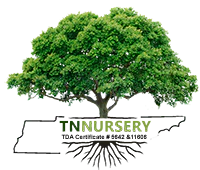Japanese Maple Tree
The Japanese Maple Tree is a stunning and highly regarded ornamental tree from East Asia, particularly Japan, Korea, and China. Renowned for its exquisite foliage and graceful form, this tree has become a favorite in gardens and landscapes worldwide.
The trees are celebrated for their distinctive, delicate leaves. The leaves are typically palmate, meaning they have multiple lobes radiating from a central point, resembling an open hand. These leaves can range in color from vibrant green to deep red or purple, depending on the cultivar and the season. In the fall, the foliage undergoes a breathtaking transformation, turning brilliant shades of crimson, orange, or gold, adding a burst of color to the landscape.
Japanese Maple Tree Vary In Shape And Size
These trees come in various shapes and sizes, with some growing as compact shrubs and others developing into small to medium-sized trees. Their graceful and often weeping branches create a mesmerizing silhouette, making them ideal for enhancing the visual appeal of gardens, patios, and pathways.
The trees thrive in temperate climates and prefer well-drained, slightly acidic soil. They are relatively low-maintenance but require adequate water and protection from harsh winds. Pruning can help preserve their form and size, but it should be done carefully to avoid stressing the tree.
Due to their aesthetic appeal, the Japanese maple trees have numerous cultivars, each with its unique leaf shape, color, and growth habit. Some popular cultivars include the Bloodgood Japanese Maple (known for its deep red leaves), the Laceleaf Japanese Maple (featuring finely dissected, lace-like leaves), and the Coral Bark Japanese Maple (recognized for its striking red branches).
Significance Of The Tree
These trees hold cultural significance in Japan, where they are often featured in traditional gardens and are associated with tranquility and grace. In addition to their use in ornamental landscapes, they are also prized for bonsai cultivation.
The Japanese Maple Trees are cherished for their elegance, seasonal beauty, and versatility, making them a prized addition to gardens and landscapes worldwide. Their unique charm and vibrant foliage make them a timeless favorite among garden enthusiasts and nature lovers.
Shop Today At Garden Plant Nursery
















































